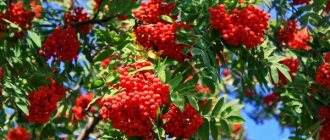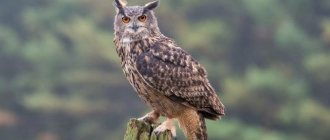- Reports and messages
- Plants
- Spruce
Spruce belongs to the pine family.
This is an evergreen tree, a symbol of the New Year. Spruce can grow up to fifty meters in height and live up to three hundred years. In the USA there is a spruce tree that is eight hundred and fifty-two years old. There are about forty-five varieties of tall spruce trees. Of these, the following can be noted: Eastern European or ordinary, Siberian, Oriental, Korean, Ayak, Tien Shan, Glen spruce, Canadian, red, Serbian, blue.
Low spruces are called dwarf. Dwarf spruces have found wide application in the field of landscape design and are often used in home and interior decoration. There are the following types of dwarf spruce trees: Push spruce, Nidiformis spruce, Nana spruce, Bialobok spruce.
The distribution area of spruce is very large. The common spruce has the largest distribution area: Western Europe, Russia and the Urals. Siberian and Ayan spruce grows in Siberia, and eastern spruce grows in the Caucasus. There are varieties of spruce that grow in certain climates: for example, only on the Kuril Islands, southern Sakhalin and the island of Hokkaido.
Spruce reproduces with the help of heterosexual cones. When the seeds ripen, the cone falls to the ground and is carried away by the wind, sometimes very far. Spruce begins to reproduce after fifteen years of growth.
Spruce is not only an ornamental plant, it is widely used in various fields. Spruce bark, wood, pine needles and cones are used.
Spruce wood is very “musical” and has the ability to “hold” sound. The speed of sound propagation in spruce is fifteen times greater than the propagation of sound in air. Previously, in Rus' they made harps from spruce, but now they make soundboards for cellos, violins and guitars. To do this, choose a tree without curls and knots. Since houses were previously built from spruce, restorers are looking for pieces of spruce in the ruins of old houses that will be used in restoration: it is believed that such spruce has acquired even greater musicality with age. They tried to replace the spruce with another tree, but they did not find a second such “musical” tree.
The second major area of spruce is wood chemical production. Cardboard, paper, cellulose are made from it, and turpentine is obtained. Tannins are obtained from the bark, which are used in industry for tanning leather and in medicine.
Essential fractions and volatile oils are isolated from the needles, which are used in the perfume industry and medicine.
Spruce is widely used in ornamental gardening and park construction. Spruce trees are often planted along roads for protection from the wind. Nuts from the cones serve as food for birds and animals.
In many countries, spruce is decorated for the New Year. In America, the Christmas tree is decorated long before Christmas. They decorate mainly with edible decorations: tangerines, sweets and red and white candies in honor of Jesus Christ.
In Germany, Christmas trees glow and shimmer. They are decorated with balls, garlands, and Santa Claus figurines.
In Finland, trees are protected, so they prefer to decorate artificial Christmas trees with homemade decorations.
In many countries, for the New Year they decorate not a Christmas tree, but other trees: in China - a tangerine or orange tree, in Mexico - a palm tree, in Africa - a baobab tree. Often in Asian countries they dress up not a tree, but a rake in order to “rakes” more wealth in the new year.
Description
The Christmas tree is a slender tree that can grow up to 35 meters high. During the first 10 years it grows very slowly - a few cm per year, then the growth rate increases, but after 100-120 years it slows down again. It has a pyramidal (triangular) crown with a sharp tip. The branches are densely located throughout the trunk. It is often difficult to see behind the spruce feet.
In a young tree, the bark is smooth, gray-brown in color; in an old tree, the bark becomes gray and peels off in thin plates. The needles are dark green and shiny, sharp and prickly. The needles are much shorter than those of pine, up to 3 cm long.
They stay firmly on the branches for 7-10 years. But in urban conditions, with heavy smoke in the air, the lifespan of needles is greatly reduced: they fall off after only 3 years.
The spruce root system is located close to the surface, so strong winds can knock down the tree.
Spruce is a long-liver, it lives 250-300 years.
Conclusion
It is impossible to remain indifferent to the strict symmetrical silhouettes and exquisite shades of blue spruce trees. That is why these noble conifers are often found in landscape design projects. They harmonize perfectly with other plants, look good at any stage of growth and emit a pleasant, calm energy. By choosing popular varieties of blue spruce, you will surely decorate the landscape and create a green corner that you will love with all your heart.
You can also see all our live Christmas trees for sale.
Rate this article
(Votes: 20, Rating: 5.45)
Where does it grow
It grows throughout the Northern Hemisphere. It can be found in North America, Central and Northern Europe. It is widespread in Russia: in Siberia, the Urals, the Far East, the Caucasus, and in the steppe zone. Also grows in China and Japan.
50 types of in total . The most common: Siberian, European, Caucasian, Canadian, white, red, black.
The Christmas tree is the basis of the taiga. It grows in mixed forests, coexisting well with larch, pine, Siberian cedar, fir, oak, linden, birch, aspen, and hazel. It also forms pure spruce forests, which have a number of features:
- It's damp and dark here;
- the soil is completely covered with moss;
- under the spruce paws grow dense thickets of blueberries, lingonberries, wood sorrel, ferns, and cuckoo flax.
Medicinal properties of Spruce
Fir cones, pine needles and resin are used for medicinal purposes.
The needles contain bactericidal substances, amino acids, chlorophyll, vitamins and phytoncides. Spruce needles are rich in vitamin C, the concentration of which increases in winter, therefore, since ancient times, pine “tea” has been an excellent remedy for scurvy and at the same time strengthened the entire body.
Daily consumption of 3–4 spruce needles for a month can restore immunity and increase resistance to a number of viral diseases.
Several spruce branches placed in a vase in a room can kill harmful bacteria in the room, leaving a pleasant aroma in the air.
Fir cones are rich in tannins and essential oils. They also contain copper, manganese, aluminum, and iron.
Essential oils are used in the fight against acute respiratory infections and diseases of the upper respiratory tract.
Syrup from the buds of Spruce is prescribed for microinfarctions.
A decoction of pine needles is used by inhalation to treat sore throat and sinusitis.
Spruce resin or resin has antiseptic properties and can be used in ointments to heal wounds and ulcers.
Growing conditions and reproduction
For a spruce to grow well, it needs the following conditions:
- Shadow. This tree does not really like the sun; young trees often get sunburned in open areas.
- Sufficient hydration. The Christmas tree does not tolerate drought well.
- Temperate climate. The tree is cold-resistant, not afraid of frost, but it does not grow well in the southern regions, where summers are too hot and long,
- The soil should not be too dense, but moderately fertile.
Spruce is a monoecious plant. This means that male spikelets and female cones grow on the same tree. Propagated by seeds, the germination rate of which is very good. The cones open in late November - early December, the seeds fall out, are picked up by the wind and carried far around the surrounding area.
In early spring, the seed awakens and begins to grow. The main condition for the sprouts to take root and begin to develop well is a warm spring, because they die during spring frosts.
image of Eli
Since childhood, at Christmas and New Year, people have become accustomed to smelling fir branches.
Mixing with the smell of tangerines, this fragrant pine aroma was a harbinger of a miracle, gifts, new experiences and the New Year. For many centuries, Spruce has personified the symbol of a new cycle. In ancient times, remaining evergreen, Spruce was an allegory of eternal youth and immortality, longevity and fidelity.
For the same reasons, the Spruce “spruce branches” were and remain in many villages a sign of a bygone life. During the funeral procession, “spruce branches” are thrown at the feet, saying goodbye to the departed. Their age has ended, but has passed into eternity.
In Scandinavia, spruce was used for ritual bonfires. The resinous firewood gave the fire unique strength.
Use in the national economy
Spruce plantations can often be seen in sanatoriums. Because their needles release phytoncides that clean and disinfect the air. Also, spruce often becomes the basis of landscapes in personal plots.
High-quality musical instruments are made from this wood. Soft wood is used to make paper, rayon, and smokeless gunpowder. Resin, tar, rosin, and turpentine are obtained.
Fir cones are widely used in folk medicine. Healers believe that a Christmas tree is a donor tree; if you lean against it and stand there for a few minutes, it will give a person energy and strength.
the forest guest for the New Year.
How much joy it brings, filling the house with a special forest smell and pleasing the eye with its beauty!
If this message was useful to you, I would be glad to see you in the VKontakte group. Also, thank you if you click on one of the “like” buttons:
Popular message topics
- Profession dentist
A dentist has always been an indispensable doctor, especially in modern society, when beauty and aesthetics come to the fore. This is a doctor who treats the maxillofacial area. When diseases occur in the oral cavity, a dentist comes to the rescue. - Zhukovsky, the life and work
of Vasily Andreevich can be called one of the most important poets of the 18th century. Having studied the works of Western educators, he wrote wonderful things in which faith in bright times for the people was visible, in the fact that they could be - City of Saransk
The city of Saransk is the capital of the Republic of Mordovia, which is part of the Volga Federal District. 1641 is considered the year of the founding of the city, which at that time was a fortress. The city has gone through stages of development from a defensive fortress,
Yew
The leaves of this species are hard, linear or lanceolate, with narrow or wide needles. For the most part, trees remain green all year round, but there are, although very rarely, species that lose leaves in winter.
Interesting fact : yew needles are dangerous for animals, as they cause poisoning.
Yew berry
Yew berry
A very elegant evergreen plant, sometimes reaching 40 m in height, has healing properties. At the same time, it is poisonous. It grows slowly, but its life expectancy is high - several thousand years. A lush, dense bush in shape resembles a cylinder or pyramid. The bark is smooth, red-gray. Flat dark green needles 20-35 mm long are arranged in a spiral. The strong branched root allows the yew to grow in any type of soil. It reproduces by seeds, which are spread by birds eating the berries of the bush.
Torreya
Torrey
The genus of the yew family is named after the American flora researcher John Torrey. It is a small tree, usually 5-20 m in height. The spiral-shaped needles are rigid, with pointed ends. The plant can be either monoecious or dioecious. Female cones mature in a year and a half. The only large seed looks like a nut.
The needles, stems, and cones emit a very unpleasant aroma. The range of torrea is East Asia and North America.
What coniferous trees are bought for the New Year?
Spruce is an indispensable attribute of the New Year's holiday.
New Year's holidays cannot be imagined without fragrant spruce, pine or fir. They decorate apartments with their presence and look great under the snow caps in large parks and squares.
Some people prefer spruce because of its low price and fragrant resin aroma. The cone-shaped crown of a tree with thick branches looks bright and festive when dressed up.
In a warm room, spruce quickly loses its fresh appearance and smell. The needles quickly begin to dry out and turn yellow. To somehow refresh the plant, you need to constantly spray and water it.
Pine is considered more resistant to home heat, but its price is higher. But for those who are attracted by the rich antimicrobial aroma, this conifer is just right. Pine is not as thick as spruce, but its needles are long and strong, so you can hang toys on them without fear. Its negative side is the release of sticky, difficult to wash off resin.
Fir will last the longest without losing its freshness. Due to the soft, non-thorny needles, dressing it up is a pleasure. The downside is the lack of pine smell and the high price.
Origin of conifers
Conifers or pinopsids are the oldest group of gymnosperms. Their first representatives grew in the northern latitudes of the planet 370 million years ago. This was the age of dinosaurs, the late Carboniferous period of the Paleozoic era. Later, it was these representatives of the flora that played the main role in increasing the cover of vegetation in the northern hemisphere.
Around 185-66 million years ago, pinopsids occupied large areas and were highly diverse. This period can be considered the starting point for modern conifers.
Approximately 66-2.5 million years ago, the oldest species could be found everywhere, including Antarctica and Greenland, beyond the tree line.
Interesting fact : conifers hold the following plant world records. The maximum height is evergreen sequoia (115.2 m), crown thickness is Mexican taxodium (11.42 m in diameter), age is long-lived pine (4700 years).








